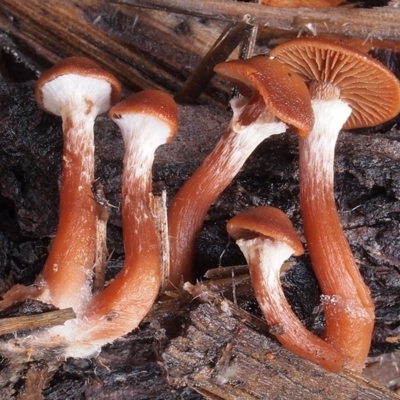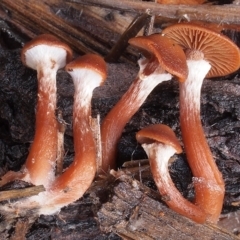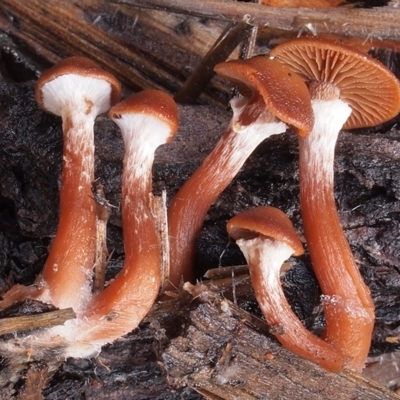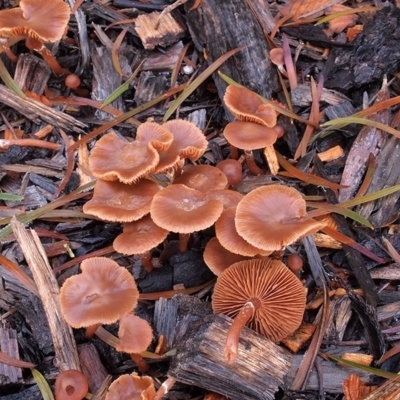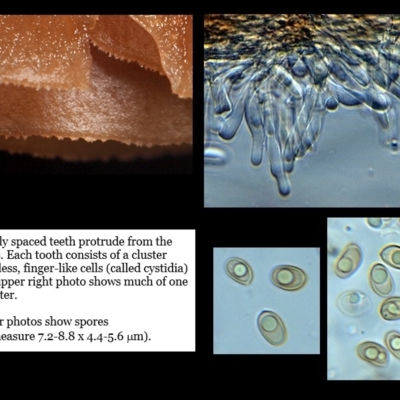Tubaria serrulata (Tubaria serrulata)
The fruitbody is a mushroom with a cap atop a central stem. The cap is up to 5 centimetres across, initially hemispherical but flattening with age to become shallowly convex or with the outer area raised. The cap is smooth, striate towards the margin, reddish-brown and slightly waxy looking (but not sticky). The colour fades towards pale brownish yellow (even in fresh mushrooms) but if moistened the cap returns to a deep colour. The gills and stem are also shades of reddish-brown. The gill edges are not smooth and a hand lens shows them to have tiny teeth, a bit like those on a saw blade but not so regularly spaced. The stem is up to 5 centimetres long and half a centimetre wide, with some white furriness at the base. The stem may have a cover of whitish fibrils, but rough handling (or weathering) may compress (or remove) them, thereby negating their effect and revealing the underlying reddish brown colour.
There is no universal veil but a partial veil is present. It is white and is composed of densely-packed white fibrils which continue down the stem (almost as if a narrow, white funnel surrounded the upper part of the stem). This is easily seen in young mushrooms but in older ones the only evidence may be a narrow white ring around the stem.
Spore print: yellowish brown.
The mushrooms grow on woody debris.
This is a native species that was first described in 1933 (as Pholiota serrulata) based on material collected in South Australia and was transferred to Tubaria by Matheny et al (see the references).
Look-alikes
When the white, funnel-like partial veil is present the species seems to be fairly distinctive. With age recognition is not so easy since there are other small brown mushrooms (which may have flimsy rings) that also grow on woody debris (in particular the genus Galerina, which is common).
Tubaria rufofulva is a maroon to burgundy coloured species. Grgurinovic (see the references) considered Pholiota serrulata to be a synonym of Tubaria rufofulva. Matheny et al noted that molecular evidence showed them to be separate species.
References
Grgurinovic, C.A. (1997). Larger fungi of South Australia. Botanic Gardens of Adelaide and State Herbarium and the Flora and Fauna of South Australia Handbooks Committee.
Matheny, P.B et al. (2007). Taxonomy of displaced species of Tubaria, Mycologia, 99, 569–585.
Tubaria serrulata is listed in the following regions:
Canberra & Southern Tablelands
Species information
- Tubaria serrulata Scientific name
- Tubaria serrulata Common name
- Not Sensitive
- Local native
- Non-invasive or negligible
- Machine learning
Location information
-
Maps
ANBG
